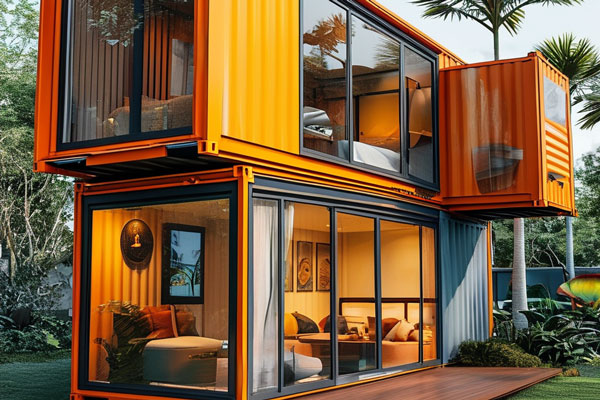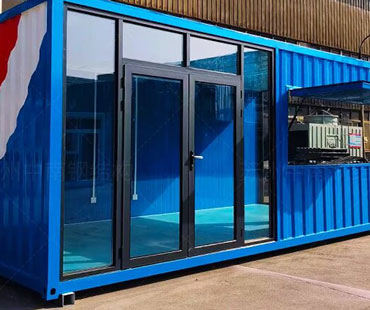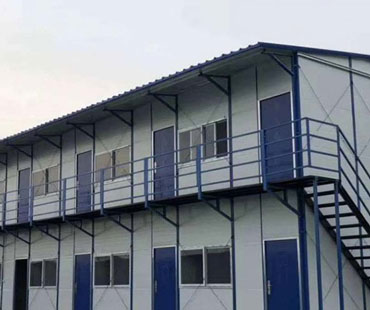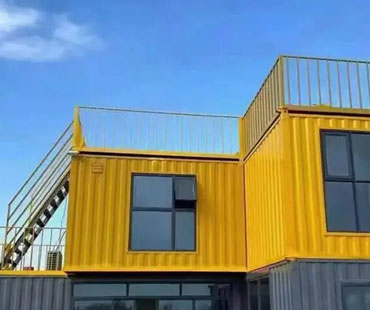In recent years, container architecture has emerged as a revolutionary approach to urban design, offering innovative solutions to the challenges of housing, commercial spaces, and sustainable development. Utilizing repurposed shipping containers as building blocks, architects and developers are reimagining urban landscapes, creating functional, affordable, and aesthetically appealing structures.
Container architecture refers to the practice of using shipping containers—originally designed for transporting goods across oceans—as the primary structural elements in building design. These containers are inherently durable, mobile, and stackable, making them ideal for a variety of architectural applications. The concept gained popularity as urban areas faced increasing challenges such as housing shortages, rising construction costs, and the need for sustainable building practices.
Benefits of Container Architecture
1.Affordability and Speed of Construction
One of the most significant advantages of using shipping containers is their cost-effectiveness. Compared to traditional building materials, containers can be sourced at a fraction of the price. Additionally, the modular nature of container construction allows for rapid assembly, significantly reducing the time from conception to completion. This speed is particularly valuable in addressing urgent housing needs in urban areas.
2.Sustainability
Container architecture promotes sustainability by repurposing materials that would otherwise contribute to landfill waste. By reusing shipping containers, architects can reduce the environmental impact associated with new construction. Moreover, many container projects incorporate green technologies such as solar panels, rainwater harvesting systems, and energy-efficient insulation, further enhancing their sustainability.
3.Flexibility and Adaptability
The modular design of shipping containers allows for incredible flexibility in architectural design. Containers can be easily stacked, arranged, and modified to create diverse spaces, from single-family homes to multi-story apartment complexes, offices, and even pop-up shops. This adaptability makes container architecture suitable for various urban scenarios, including temporary structures for events or permanent solutions for affordable housing.
4.Aesthetic Appeal
Contrary to the stereotype of shipping containers as mere utilitarian objects, contemporary container architecture embraces creativity and design innovation. Architects frequently employ vibrant colors, unique layouts, and clever landscaping to enhance the visual appeal of container-based structures. This artistic approach not only transforms the urban landscape but also challenges conventional notions of beauty in architecture.

Several successful container architecture projects illustrate the potential of this innovative building method:
-The Boxpark in Shoreditch, London: This pop-up mall constructed from shipping containers has become a cultural landmark, featuring shops, eateries, and community spaces. Its design promotes social interaction and has revitalized the surrounding area.
-The Container House in Mexico City: Designed by architect Juan O’Gorman, this residential project utilizes multiple containers to create a spacious and modern home. The design seamlessly integrates indoor and outdoor spaces, showcasing the versatility of container architecture.
-Cargotecture in the United States: This firm specializes in creating sustainable homes using shipping containers. Their projects often include energy-efficient designs and innovative layouts that maximize space and functionality.
Despite its numerous advantages, container architecture also faces challenges. Building codes and zoning regulations can be barriers to the widespread adoption of container structures, as many local governments are unfamiliar with this building method. Additionally, insulation and climate control are critical considerations, as containers can be susceptible to extreme temperatures. Proper design and materials must be incorporated to ensure comfort and livability.
Container architecture represents a dynamic and innovative approach to modern urban design, addressing pressing issues such as housing shortages, sustainability, and the need for flexible spaces. As cities continue to evolve and face new challenges, the adaptability and efficiency of container-based construction may play a vital role in shaping the future of urban environments. By embracing this trend, architects and developers can contribute to creating vibrant, sustainable, and inclusive urban spaces that meet the diverse needs of modern society.


